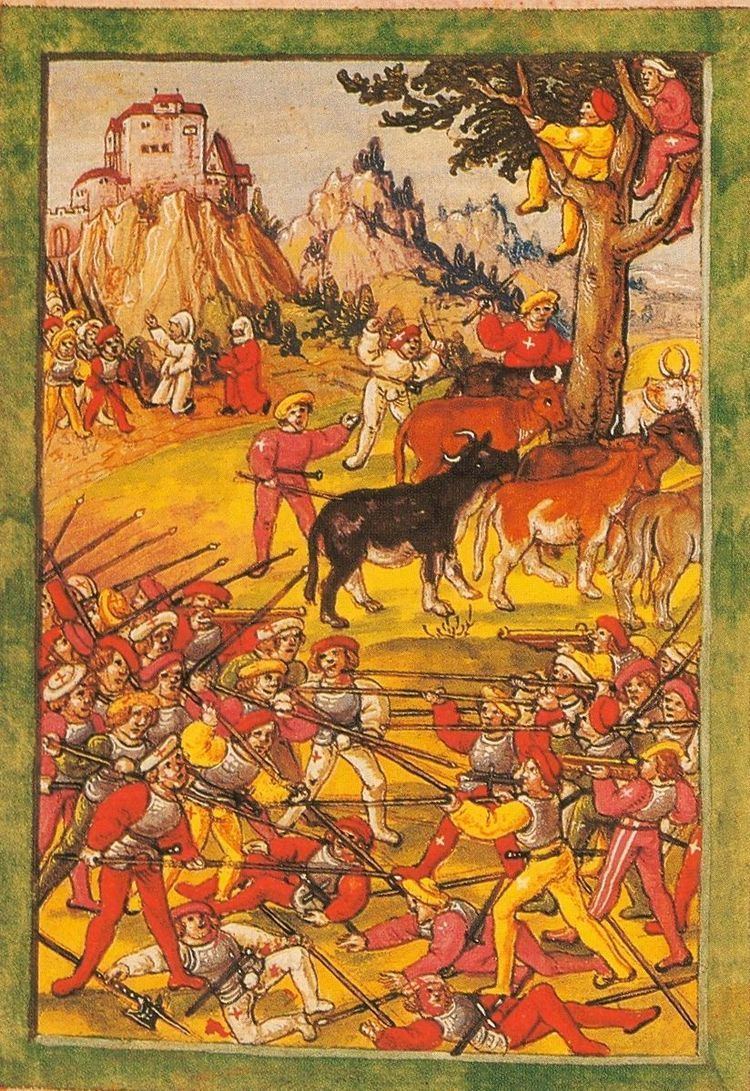 | ||
Cattle raiding is the act of stealing cattle. In Australia, such stealing is often referred to as duffing, and the perpetrator as a duffer. In North America, especially in cowboy culture, cattle theft is dubbed rustling and an individual who engages in it is a rustler.
Contents
History
The act of cattle rustling is quite ancient. Historically, the first suspected raids occurred over seven thousand years ago.
Mythology
Abduction of women and theft of livestock were and are practiced in many pastoral cultures. Cattle raids play an important part in Proto-Indo-European religion; see for example the Old Irish Táin Bó Cúailnge ("Cattle Raid of Cooley"), the paṇis of the Rigveda and the Mahabharata cattle raids and cattle rescues (India), and the Homeric Hymn to Hermes, who steals the cattle of Apollo (ancient Greece). These myths are often paired with myths of the abduction of women (compare Helen of Troy, Saranyu, Sita, and The Rape of the Sabine Women).
American Old West
In the American frontier, rustling was considered a serious offense, and in some cases resulted in vigilantes hanging the thieves.
One cause of tensions between Mexico and the United States in the years leading up to the Mexican–American War (of 1846-1848) was the frequent raiding of cattle by Native Americans from north of the border. Mexico's military and diplomatic capabilities had declined after it attained independence and left the northern half of the country vulnerable to the Apache, Comanche, and Navajo Indians. The Indians, especially the Comanche, took advantage of Mexico's weakness to undertake large-scale raids hundreds of miles deep into the country to steal livestock for their own use and to supply an expanding market in Texas and the United States. The Indian raids left thousands of people dead and devastated northern Mexico. When American troops entered northern Mexico in 1846 they found a demoralized people and little resistance from the civilian population.
Mexican rustlers were a major issue during the American Civil War (1861-1865); the Mexican government was accused of supporting the habit. American rustlers also stole Mexican cattle from across the border. Failure to brand new calves facilitated theft.
Conflict over alleged rustling was a major issue in the Johnson County War (of 1892) in the U.S. state of Wyoming.
The transition from open range to fenced grazing gradually reduced the practice of rustling in North America. In the 20th century, so called "suburban rustling" became more common, with rustlers anesthetizing cattle and taking them directly to auction. This often takes place at night, posing problems for law enforcement, because on very large ranches it can take several days for loss of cattle to be noticed and reported. Convictions are rare to nonexistent.
African Great Lakes
The Pokot and Samburu Nilotic populations in northwestern Kenya often raid each other for cattle.
Cattle rustling is a major problem in rural areas of South Sudan. In the state of Jonglei, cattle raids in August 2011 left around 600 people dead. Once again in January 2012, ethnic clashes related to cattle theft killed between 2,000 and 3,000 people and displaced as many as 34,500 in the area around Pibor.
Patagonia
Cattle raiding became a major issue at the end of the 19th century in Argentina, where cattle stolen during malones were taken through Camino de los chilenos across the Andes to Chile, where they were exchanged for alcoholic beverages and firearms. Several indigenous groups and outlaws, such as the Boroano and Ranquel peoples, and the Pincheira brothers, ravaged the southern frontier of Argentina in search of cattle. To prevent the cattle raiding, the Argentine government built a system of trenches called Zanja de Alsina in the 1870s. Most cattle raids ended after the military campaigns of the Conquest of the Desert in the 1870s, and the following partition of Patagonia established by the Boundary Treaty of 1881 between Chile and Argentina.
Israel
Theft of sheep, goats and cows, along with tractors and irrigation equipment, is one of the most difficult problems confronted by farmers in Israel. About 400 cases are reported annually in the north of the country, and in the south, farmers compare the situation to the Wild West. They suffer millions of shekels in annual losses. Most of the stolen livestock is taken to the West Bank, quickly slaughtered and then smuggled back into Israel, where it is sold by butchers to unsuspecting customers.
